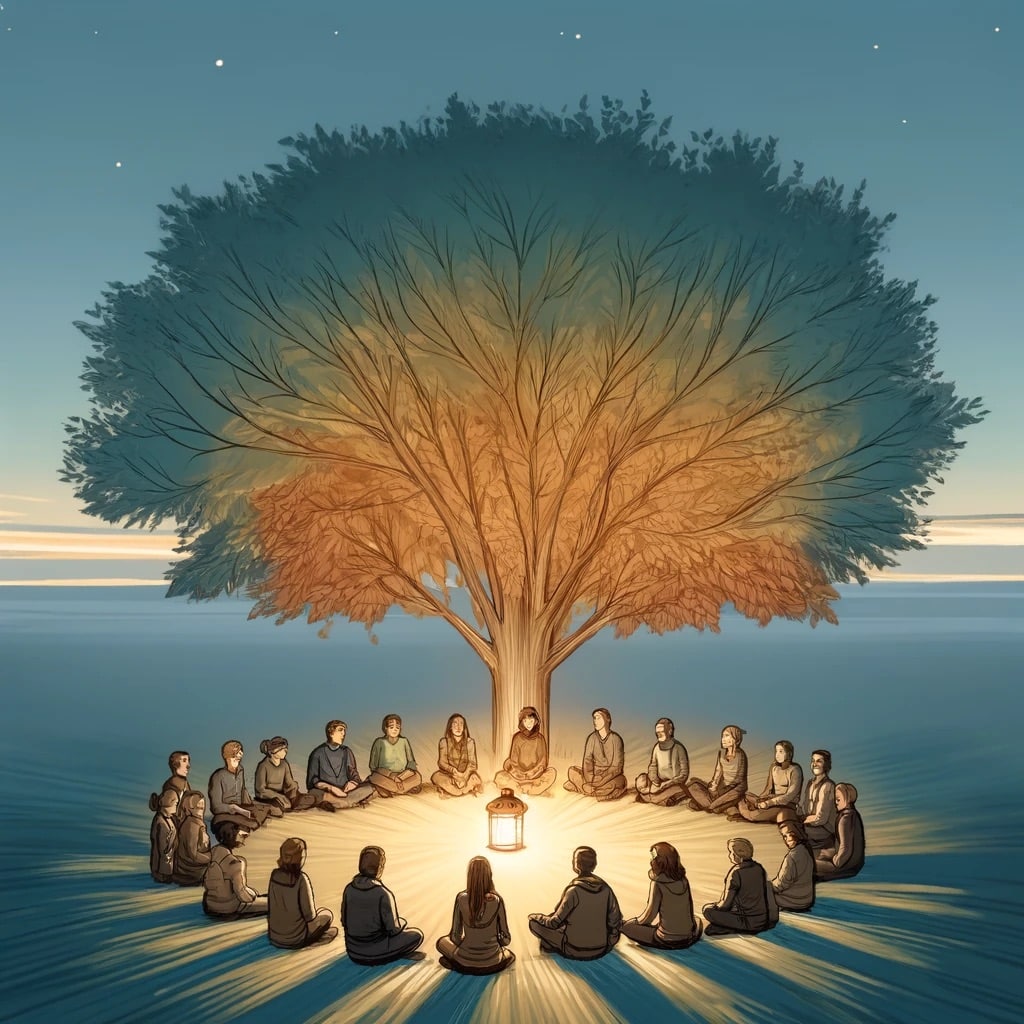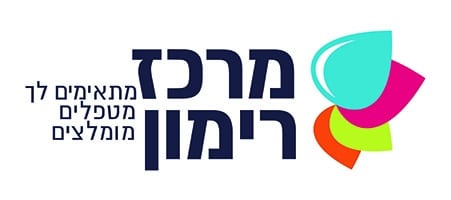Beyond the Battlefield: Navigating Post-Trauma After Military Service
A comprehensive guide about Post-Trauma from the Army
In this article about Post-Trauma After Military Service, we delve into the shadowy aftermath of war—the psychological scars carried home by those who served. This comprehensive guide illuminates the often misunderstood realm of Post-Traumatic Stress Disorder (PTSD) in military contexts, shedding light on its prevalence and profound impact on soldiers transitioning back to civilian life. From the historical roots of PTSD, once termed “shell-shock,” to the modern challenges of integrating back into society and personal relationships, this article traverses the complex landscape of post-trauma and specifically of Post-Trauma After Military Service. It offers a closer look at the emotional, psychological, and physical toll on veterans while also exploring the latest therapeutic avenues, including innovative treatments like MDMA-assisted psychotherapy, aimed at healing these invisible wounds. As we confront the societal stigma and call for a collective push toward understanding, support, and research, this piece stands as a beacon for soldiers, veterans, and their families navigating the tumultuous journey of recovery beyond the battlefield. Whether seeking knowledge, support, or ways to help, join us in this crucial dialogue and learn how RIMONCLINIC can connect those affected with professional therapists dedicated to making a difference.

Article outline:
1. Introduction
- Overview of Post-Traumatic Stress Disorder (PTSD) in military contexts.
- The prevalence and impact of PTSD on soldiers returning from combat.
2. Understanding PTSD
- The definition and symptoms of PTSD emphasize the variety of traumatic experiences that can lead to the condition beyond the battlefield.
- The psychological, emotional, and physical dimensions of PTSD as experienced by military personnel.
For Further Understanding: The History of PTSD
- A historical overview of PTSD, tracing its recognition from “shell-shock” to modern-day understanding.
3. The Impact of PTSD on Soldiers and Veterans
- Detailed exploration of the manifestations of PTSD among soldiers, including avoidance symptoms, arousal, and negative thoughts and mood.
- Common problems faced by service members and veterans with PTSD, such as substance abuse, relationship issues, depression, and occupational instability.
4. PTSD and Relationships
- The challenge of PTSD in the context of personal and familial relationships.
- Strategies for managing PTSD within relationships, fostering communication, understanding, and support.
5. Treatment and Support for PTSD
- Overview of available treatments for PTSD, including counseling, medication, and newer therapies like MDMA-assisted psychotherapy.
- The role of specialized PTSD treatment programs in providing care to veterans in Israel.
For Further Understanding: MDMA as a treatment for PTSD
6. Societal Perspectives and Stigma
- The societal stigma surrounding PTSD and mental health in the military, and efforts to address and reduce these perceptions.
- Education and advocacy as tools for changing societal views on PTSD and supporting affected individuals.
7. FAQs
- Addressing common questions about PTSD, its effects on soldiers returning from deployment, and how families can support their loved ones.
8. Conclusion and call for action
- Summarizing the need for continued research, support, and destigmatization of PTSD among military personnel and the broader community.
- Encouraging people who are dealing with post-trauma or know someone who is dealing with post-trauma to contact RIMONCLINIC for help in finding a recommended and professional therapist
Comprehensive Guide on Post-Trauma from the Military
1. Introduction
In the wake of military service, particularly following combat, soldiers often carry more than just physical scars back home. The psychological aftermath, known as Post-Traumatic Stress Disorder (PTSD), emerges as a formidable challenge, affecting not just the individual but also their families and communities. This comprehensive guide delves into Post-Trauma from the Military, shedding light on its prevalence, its profound impact on those who have served, and the broader societal implications.
Post-trauma after Military Service, or military post-trauma, is a condition that surfaces following exposure to life-threatening or other traumatic events during military service. This guide aims to explore the intricate facets of Post-Trauma among Soldiers, offering insights into the complex nature of PTSD, its symptoms, and the path toward healing and recovery.
The repercussions of military post-trauma extend beyond the individual, influencing various aspects of daily life and well-being. With an increasing number of soldiers returning from ongoing conflicts around the world, understanding Post-Trauma among Soldiers Returning from an Ongoing War is more critical than ever. It is about addressing the immediate symptoms and acknowledging the long-term journey of recovery and support.
As we embark on this exploration, our objective is to foster a deeper understanding of Post-Traumatic Stress Disorder within the military context. This guide aims to illuminate the path for soldiers and their loved ones toward healing, providing them with the knowledge and resources necessary to navigate the challenging aftermath of service.
2. Understanding PTSD in Military Contexts
At the heart of Post-Trauma after Military Service lies Post-Traumatic Stress Disorder (PTSD), a condition that may arise following exposure to traumatic events. This section delves into the definition and symptoms of PTSD, highlighting the array of traumatic experiences beyond the battlefield that can precipitate this condition and explores the psychological, emotional, and physical dimensions as experienced by military personnel.
Definition and Symptoms
PTSD is characterized by intense, disturbing thoughts and feelings related to experienced or witnessed traumatic events. Symptoms can include flashbacks, nightmares, severe anxiety, and uncontrollable thoughts about the event. Importantly, the trauma that leads to Post-Traumatic Stress Disorder extends beyond combat experiences, encompassing any severe psychological shock or injury. This broader understanding is crucial for addressing Post-Trauma among Soldiers effectively, recognizing the diverse origins of their trauma.
Psychological, Emotional, and Physical Dimensions
The impact of PTSD on military personnel is profound and multifaceted. Psychologically, it can manifest as increased vigilance, difficulty concentrating, and pervasive feelings of guilt or shame. Emotionally, soldiers may experience heightened irritability, mood swings, and a persistent sense of fear or sadness. Physically, the stress associated with PTSD can lead to sleep disturbances, fatigue, and a host of other somatic complaints. These dimensions underscore the complexity of Military post-trauma and the need for comprehensive approaches to treatment and support.
Understanding the full scope of Post-Trauma after Military Service is essential for developing effective interventions and support systems for affected individuals. As we continue to explore the nuances of PTSD among soldiers, particularly those returning from ongoing wars, we hope that this knowledge will pave the way for healing and recovery.
For Further Understanding: The History of PTSD
The journey of understanding Post-Traumatic Stress Disorder (PTSD) spans centuries, evolving alongside advancements in psychology and changes in societal recognition of war’s psychological toll. This section offers a historical overview, tracing PTSD’s recognition from the term “shell-shock” to its modern-day understanding, especially in the context of Post-Trauma after Military Service.
From Shell Shock to PTSD
The term “shell shock” was first used during World War I to describe the psychological trauma experienced by soldiers exposed to relentless bombing and trench warfare. Initially, it was thought to result from physical injury to the nerves. However, as time progressed, it became clear that the symptoms were related to psychological trauma. This early recognition began a long journey toward understanding the complex nature of PTSD among Soldiers.
Throughout the 20th century, the understanding of what we now know as PTSD continued to evolve. The term “combat stress reaction” was used during World War II. It wasn’t until the aftermath of the Vietnam War that the American Psychiatric Association formally recognized PTSD in 1980, acknowledging it as a legitimate psychiatric condition. This recognition was a significant milestone in the history of Military Post Trauma, as it validated the experiences of countless soldiers and opened the door for research and treatment.
Today, our understanding of PTSD has expanded beyond the military context, recognizing that the condition can result from a variety of traumatic events. However, the legacy of Post-Trauma after Military Service remains pivotal in the ongoing efforts to provide support and treatment to those affected. The historical perspective of PTSD underscores the importance of acknowledging and addressing the psychological wounds of war, facilitating a deeper comprehension of the condition and enhancing support mechanisms for soldiers returning from ongoing war and other traumatic experiences.
3. The Impact of PTSD on Soldiers and Veterans
The repercussions of Post-Traumatic Stress Disorder (PTSD) extend far beyond the battlefield, deeply affecting the lives of soldiers and veterans long after their service. This section delves into the manifestations of PTSD among these individuals, highlighting the complex challenges they face, from avoidance symptoms and arousal to negative thoughts and moods.
Manifestations of PTSD
Soldiers and veterans with PTSD may experience a range of symptoms that significantly impact their daily lives. Avoidance symptoms, such as steering clear of places, events, or objects that remind them of the traumatic experience, are common. This can lead to a withdrawal from social activities and isolation. Arousal symptoms, including being easily startled, tense, or having difficulty sleeping, can make it hard for individuals to relax and enjoy a peaceful life. Negative thoughts and moods encompass feelings of guilt, sadness, or loss of interest in activities once enjoyed, contributing to a pervasive sense of despair.
Common Problems Faced by Service Members and Veterans
The impact of PTSD on service members and veterans can manifest in various problematic behaviors and life challenges. Substance abuse is a frequent issue, with individuals turning to alcohol or drugs as a form of self-medication. Relationship issues are common, including difficulty maintaining close relationships and increased conflict with family and friends. Additionally, depression and occupational instability, such as trouble holding down a job or a lack of fulfillment in their career, can further exacerbate the struggle to reintegrate into civilian life.
The path to recovery for soldiers and veterans with Post-Trauma after Military Service is fraught with challenges. However, understanding the multifaceted impact of PTSD is the first step towards healing. Society must recognize these struggles and provide comprehensive support, including mental health services, community integration programs, and employment opportunities, to aid in their transition and recovery.

4. PTSD and Relationships: Navigating the Challenges Together
Personal and familial relationships play a pivotal role in the lives of soldiers and veterans affected by Post-Traumatic Stress Disorder (PTSD). The challenge of navigating PTSD within these relationships can be profound, impacting intimacy, communication, and the overall dynamic. This section explores the challenges and strategies for managing PTSD within relationships, aiming to foster an environment of understanding, communication, and support.
The Challenge of PTSD in Relationships
For those experiencing Post-Trauma after Military Service, the symptoms of PTSD can create significant barriers in personal and familial relationships. Issues such as heightened irritability, difficulty trusting others, and avoiding social interactions can strain connections with loved ones. The emotional withdrawal often seen in individuals with PTSD can leave family members feeling isolated or rejected, complicating the familial dynamic and making mutual understanding challenging.
Strategies for Managing PTSD Within Relationships
Despite these challenges, there are effective strategies that can help manage the impact of PTSD on relationships:
- Fostering Communication: Open, honest communication is crucial. Encouraging dialogue about each person’s feelings and experiences can help bridge the gap of understanding and empathy.
- Seeking Professional Support: Couples therapy or family counseling with a focus on PTSD can provide valuable tools and strategies for managing symptoms together.
- Building a Support Network: Connecting with other families and individuals facing similar challenges can offer comfort and advice from those who truly understand the situation.
- Educating About PTSD: Education about PTSD’s symptoms, triggers, and effects can empower both the individual with PTSD and their loved ones to navigate the condition with greater awareness and sensitivity.
- Establishing Healthy Coping Mechanisms: Developing healthy coping strategies for stress and anxiety can benefit all relationship members, providing common ground for managing difficult moments.
Managing PTSD within relationships is a journey of understanding, patience, and collective growth. By embracing these strategies, soldiers, veterans, and their families can navigate the challenges of Post-Trauma among Soldiers with resilience and hope, strengthening bonds and fostering a supportive environment for recovery.
5. Treatment and Support for PTSD
The journey to recovery for those experiencing Post-Trauma after Military Service involves a multifaceted approach to treatment and support. From traditional counseling methods to innovative therapies, a range of options is available to address the unique needs of soldiers and veterans with PTSD. This section provides an overview of these treatments, including the role of specialized PTSD treatment programs in Israel, offering hope and pathways to healing.
Available Treatments for PTSD
Treatment for Post-Traumatic Stress Disorder encompasses a variety of methods tailored to individual needs and experiences:
- Counseling: Psychotherapy, including cognitive-behavioral therapy (CBT), is a cornerstone of PTSD treatment, offering strategies to cope with trauma and modify negative thought patterns.
- Medication: Antidepressants and other medications can be prescribed to manage symptoms such as anxiety and depression, facilitating better daily functioning.
- MDMA-Assisted Psychotherapy: This innovative treatment combines psychotherapy with MDMA to help patients process trauma more effectively and is currently under research for its potential benefits.
Specialized PTSD Treatment Programs in Israel
In Israel, specialized PTSD treatment programs play a crucial role in providing tailored care to veterans. These programs incorporate a holistic approach, combining traditional therapies with innovative methods to address the complex needs of those affected by Military Post Trauma. The focus on personalized care ensures that veterans receive the support necessary for a successful reintegration into civilian life, emphasizing the importance of psychological and social rehabilitation.
The commitment to advancing PTSD treatment and support reflects a broader recognition of the profound impact of military service on mental health. By fostering access to a range of therapeutic options and specialized care, there is a growing hope for soldiers and veterans to overcome the challenges of PTSD and lead fulfilling lives.
For Further Understanding: MDMA as Treatment for PTSD
The exploration of innovative treatments for Post-Traumatic Stress Disorder (PTSD) has led to the investigation of MDMA-assisted psychotherapy as a promising approach. This section delves into how MDMA, traditionally known for its use in recreational settings, is being re-evaluated for its therapeutic potential, particularly for those suffering from Post-Trauma after Military Service.
The Mechanism Behind MDMA-Assisted Psychotherapy
MDMA-assisted psychotherapy combines the pharmacological effects of MDMA with the supportive environment of psychotherapy. MDMA is believed to reduce fear and increase trust, enabling patients to process and confront traumatic memories during therapy sessions more effectively. This method aims to help those with PTSD, including Post-Trauma Soldiers, by potentially resetting the way traumatic memories are stored in the brain.
Research and Findings
Emerging research has shown promising results, indicating that MDMA-assisted psychotherapy can lead to significant improvements in PTSD symptoms for a substantial number of participants. Studies suggest that this treatment may be especially effective for individuals who have not responded to traditional therapies, offering new hope for soldiers and veterans facing the challenges of Military Post Trauma.
Considerations and Future Directions
While the potential benefits of MDMA-assisted psychotherapy are significant, it is essential to approach this treatment with caution. The therapy is conducted under strict clinical supervision, and further research is necessary to understand its efficacy and safety fully. As this treatment continues to be studied, it holds the promise of expanding the range of effective treatments available for PTSD, potentially transforming the care landscape for Post-Trauma among Soldiers Returning from an Ongoing War and others affected by trauma.
The exploration of MDMA as a treatment for PTSD represents a bold step forward in addressing the complex needs of those impacted by military post-trauma. By continuing to investigate and refine this approach, there is hope for more effective and personalized treatment options.
6. Societal Perspectives and Stigma Surrounding PTSD
The battle against Post-Traumatic Stress Disorder (PTSD) extends beyond the individual; it encompasses the fight against societal stigma and misconceptions surrounding mental health, particularly within the military context. This section explores the societal stigma attached to PTSD, the ongoing efforts to address and mitigate these perceptions, and the role of education and advocacy in supporting affected individuals.
The Stigma Surrounding PTSD and Mental Health in the Military
The stigma surrounding Post-Trauma after Military Service often manifests as misconceptions, silence, and judgment, deterring individuals from seeking the help they need. This stigma not only affects those suffering from PTSD but also influences the broader military culture, making it challenging to address mental health issues openly and constructively. Efforts to combat this stigma are crucial in creating an environment where soldiers and veterans feel supported and understood.
Efforts to Address and Reduce Stigma
Efforts to reduce the stigma associated with PTSD include promoting mental health awareness, implementing peer support programs, and encouraging leadership to speak openly about mental health. These initiatives aim to normalize seeking help and to foster a culture of support and resilience within the military community.
Education and Advocacy as Tools for Change
Education and advocacy play pivotal roles in changing societal views on PTSD and supporting those affected. By educating the public about the realities of PTSD, including its symptoms, causes, and treatments, we can dispel myths and reduce stigma. Advocacy efforts focus on policy changes, increased funding for mental health services, and promoting the importance of mental health care for military personnel and veterans. Together, these tools can significantly impact how society perceives and supports individuals dealing with Post-Trauma among Soldiers.
Changing societal perspectives on PTSD requires a collective effort to understand, support, and advocate for those affected by Military Post Trauma. Through continued education, advocacy, and community support, we can hope to dismantle the barriers of stigma and foster a more compassionate and supportive society for all individuals impacted by PTSD.
7. FAQs on PTSD in Military Contexts
Understanding Post-Traumatic Stress Disorder (PTSD) is crucial for supporting soldiers and veterans who have returned from deployment. Here, we address some common questions about PTSD, its effects, and the ways families can support their loved ones.
What is PTSD, and how does it affect soldiers?
PTSD is a mental health condition triggered by experiencing or witnessing a traumatic event. Soldiers, due to their exposure to combat and life-threatening situations, are at a higher risk. Symptoms include flashbacks, severe anxiety, and uncontrollable thoughts about the event, impacting their emotional and physical well-being.
Can PTSD only arise from combat experiences?
No, while combat experiences are a common cause of PTSD among soldiers, other traumatic events such as training accidents, sexual assault within the military, or witnessing death can also lead to PTSD.
How can families support a loved one dealing with PTSD?
Families can play a significant role in the recovery process by:
- Offering emotional support and understanding.
- Encouraging professional treatment and respecting their loved one’s pace in seeking help.
- Educating themselves about PTSD to better understand the condition.
- Maintaining a routine and a calm, stable environment at home.
What treatments are available for PTSD?
Treatments for PTSD include psychotherapy, medication, and newer therapies like MDMA-assisted psychotherapy. Treatment choice depends on the individual’s needs and the severity of their symptoms.
How can society better support soldiers and veterans with PTSD?
Society can support soldiers and veterans with PTSD by fostering a more understanding and accepting environment, eliminating stigma around mental health, providing access to comprehensive healthcare services, and supporting PTSD research and awareness programs.
8. Conclusion and Call for Action
As we conclude this comprehensive guide on Post-Trauma after Military Service, it’s clear that PTSD represents not only a significant challenge for military personnel and veterans but also for the broader community. The journey through understanding the intricacies of PTSD, its impacts, and the avenues for treatment and support underscores the need for ongoing research, increased support, and persistent efforts toward destigmatization.
The stories of soldiers and veterans dealing with Post-Traumatic Stress Disorder highlight a critical aspect of military service that often remains overshadowed by their valor and sacrifice. It is a solemn reminder of many’s invisible wounds and the silent battles they continue to fight long after leaving the battlefield.
Destigmatizing PTSD is not merely about changing perceptions but about affirming the value of mental health, recognizing the courage in seeking help, and ensuring that every individual affected by post-trauma receives the compassion, support, and professional care they deserve. This involves everyone—families, friends, communities, healthcare providers, and policymakers—working together to create an environment where healing and recovery are possible and encouraged.
For those who are dealing with post-trauma or know someone who is, reaching out for help is a critical first step.
RIMONCLINIC stands ready to help you find a recommended, professional therapist suited to your needs. Remember, seeking help is a sign of strength, and taking that step forward is the beginning of the journey toward healing.
We call upon everyone to take part in this mission: support the continued research into PTSD, advocate for the provision of comprehensive care for those affected, and contribute to the creation of a society where the stigma surrounding mental health is a thing of the past. Let us all participate in the movement toward understanding, acceptance, and healing.




